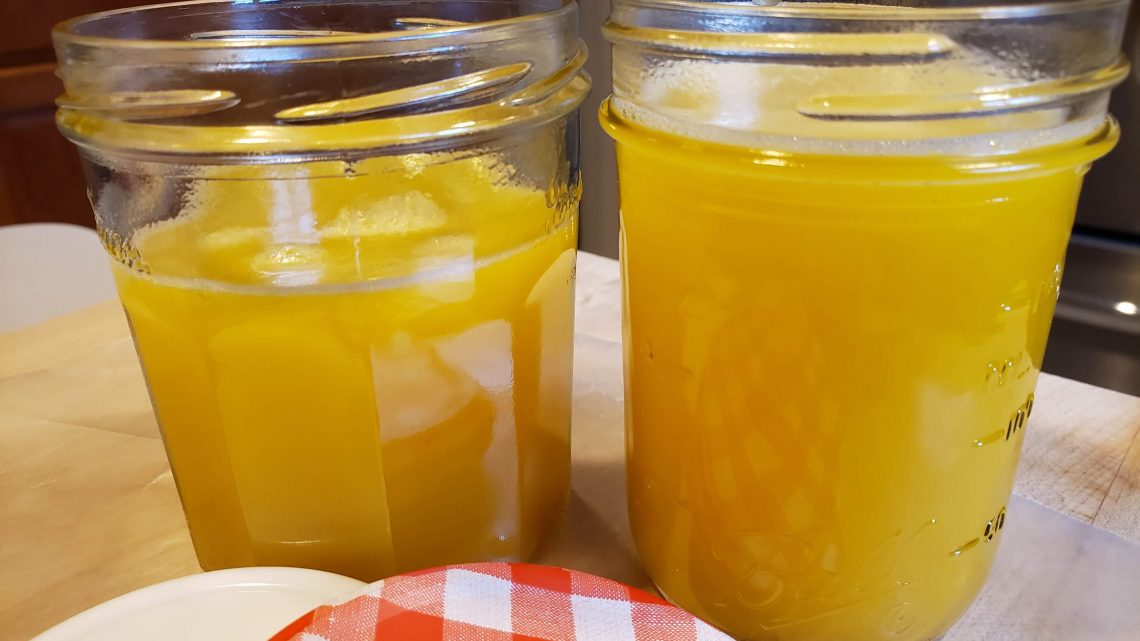 Wherever I drive at this time of year, the sun seems to be blazing into my eyes. From my scant knowledge of planetary physics, I know this can’t be true, but still, I’m always flapping the visor – up and down, back and forth. I’m not a winter hater, but it has annoyances.
Wherever I drive at this time of year, the sun seems to be blazing into my eyes. From my scant knowledge of planetary physics, I know this can’t be true, but still, I’m always flapping the visor – up and down, back and forth. I’m not a winter hater, but it has annoyances.
Fortunately, we have sunny citrus as an antidote.
Miraculously in season just when we need them, brightly flavorful lemons, vibrant oranges, and brilliant red grapefruits have enough zip to break through winter’s challenges. The stores are loaded with colorful fruit.
 We’re lucky to have two friends in South Carolina with backyard Meyer lemon trees. The Meyers, a cross between traditional lemons and oranges, are a little less tart than everyday lemons, but still pack plenty of tropical flavor.
We’re lucky to have two friends in South Carolina with backyard Meyer lemon trees. The Meyers, a cross between traditional lemons and oranges, are a little less tart than everyday lemons, but still pack plenty of tropical flavor.
Early this month, we got the word that a box of fruit was on the way. Even before it arrived, we plotted ways to use the lemons: lemon bars for dessert, lemon curd to spread on scones at teatime and cocktails for anytime after 5:00. There are lots of ways for lemons to brighten a day.
“They’re not pretty,” the note in the box said, “but they taste good.” Their sparkling flavor seemed to make the daylight last longer.
 Right away, to celebrate our good luck, the first lemon was squeezed and mixed into a classic hot toddy with bourbon, clove, brown sugar and honey – warming and delicious. More juice was mixed into an old-school sidecar – shaken with triple sec and brandy – and served in an elegant long-stemmed glass.
Right away, to celebrate our good luck, the first lemon was squeezed and mixed into a classic hot toddy with bourbon, clove, brown sugar and honey – warming and delicious. More juice was mixed into an old-school sidecar – shaken with triple sec and brandy – and served in an elegant long-stemmed glass.
There’s only a few weeks of peak flavor and juiciness once the fruit is picked. Without the protective wax coating of commercial fruit, the backyard Meyers will dry out. There’s some urgency to use them up.
Lemon curd is one way to preserve the just-picked flavor. It’s easy to make and the results are stunning. I’ve found thespruceeats.com to be a reliable source for well-tested and tasty recipes. I followed their method for Meyer Lemon Curd.
 With just five ingredients and a straightforward method, making the curd still requires a little experience. My first batch, although tasty, separated while cooling, splitting into lemony butter and eggy lemon juice. Afraid of scrambling the eggs, I hadn’t cooked it long enough. (Later I heated it up and successfully cooked it more.)
With just five ingredients and a straightforward method, making the curd still requires a little experience. My first batch, although tasty, separated while cooling, splitting into lemony butter and eggy lemon juice. Afraid of scrambling the eggs, I hadn’t cooked it long enough. (Later I heated it up and successfully cooked it more.)
Fortunately, we had a generous supply of fruit. A second attempt yielded two jars of delicious, luxuriously textured, bright yellow curd for spreading on scones, slathering on pancakes, filling tart shells or sneaking a spoonful in the afternoon.
If you don’t have a surplus of lemons or the desire to make curd from scratch, store-bought is available. I have a couple jars on hand in case of a curd emergency. Look for jars where eggs are the second ingredient and the list of other stuff is short. Dickenson’s brand is fine, even though it doesn’t quite get the bright, sharp lemony flavor of fresh.
 With the curd in hand, my attention turned to scones. The recipe from SallysBakingAddiction.com was a great winter afternoon project to do with my granddaughter, Moira.
With the curd in hand, my attention turned to scones. The recipe from SallysBakingAddiction.com was a great winter afternoon project to do with my granddaughter, Moira.
Moira measured, whisked, stirred and shaped the dough. Half was unadorned, half laced with dried currants. She cut sixteen well-sized scones. All were brushed with cream and sprinkled with demerara sugar. I handled the oven.
Served warm for teatime with a generous dollop of the lemon curd, the fresh-baked scones earned smiles all around. It was Moira’s first experience with lemon curd. Now she’s a fan.
 The next day, before Moira went home, we shared pancakes for breakfast. A swirl of curd on top, was a surprisingly delicious treat. Sweet like syrup and buttery with the surprising tang of lemon it was a new take on an old standard.
The next day, before Moira went home, we shared pancakes for breakfast. A swirl of curd on top, was a surprisingly delicious treat. Sweet like syrup and buttery with the surprising tang of lemon it was a new take on an old standard.
We got all this warm sunny flavor and fun family time from a box of “not very pretty” lemons. Winter isn’t so aggravating after all.
Frank Whitman can be reached at NotBreadAloneFW@gmail.com.











Lemon curd on a ginger cookie is Devine!
Great column on citrus sunshine.
Mary & Ron Repetti
Guilford CT